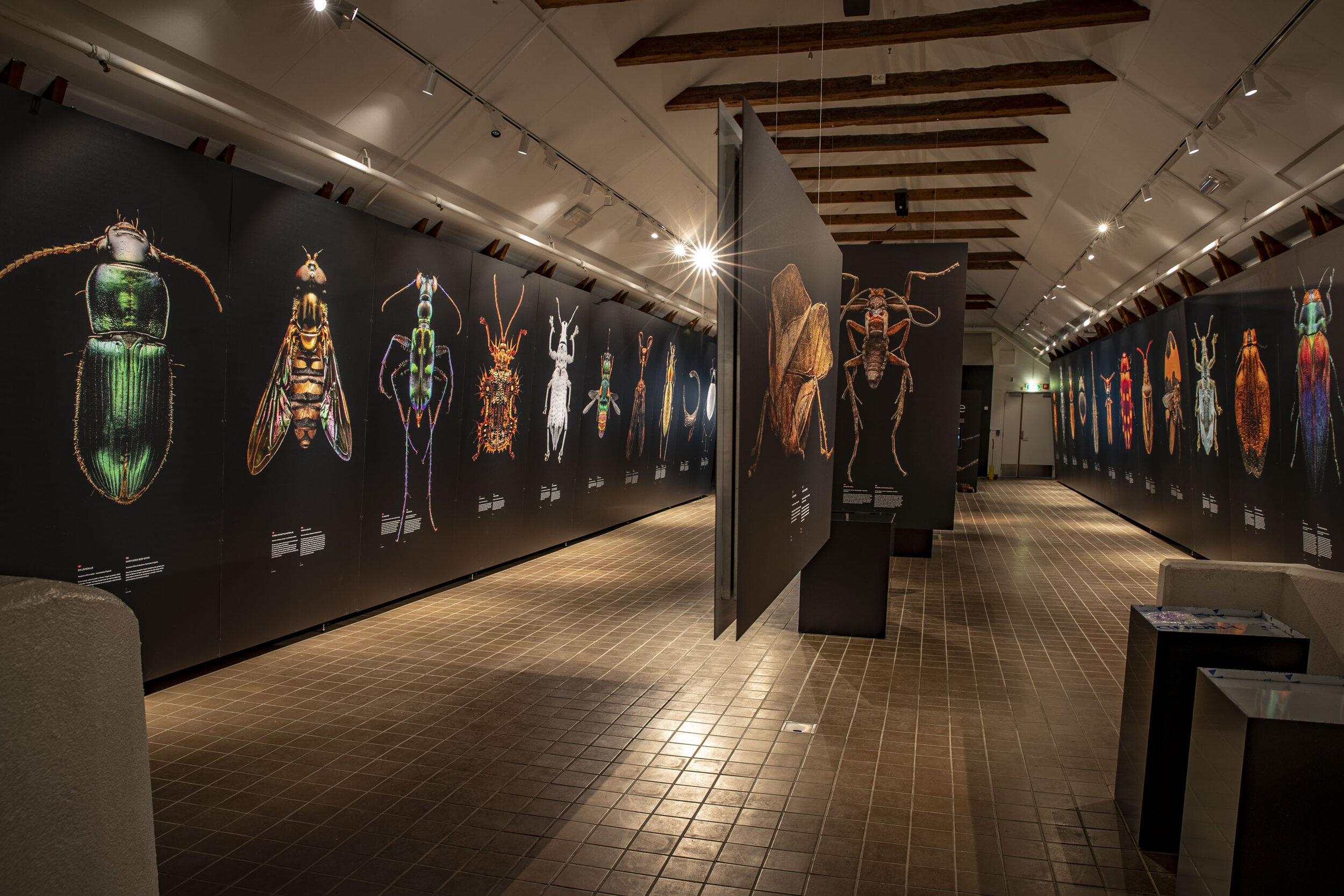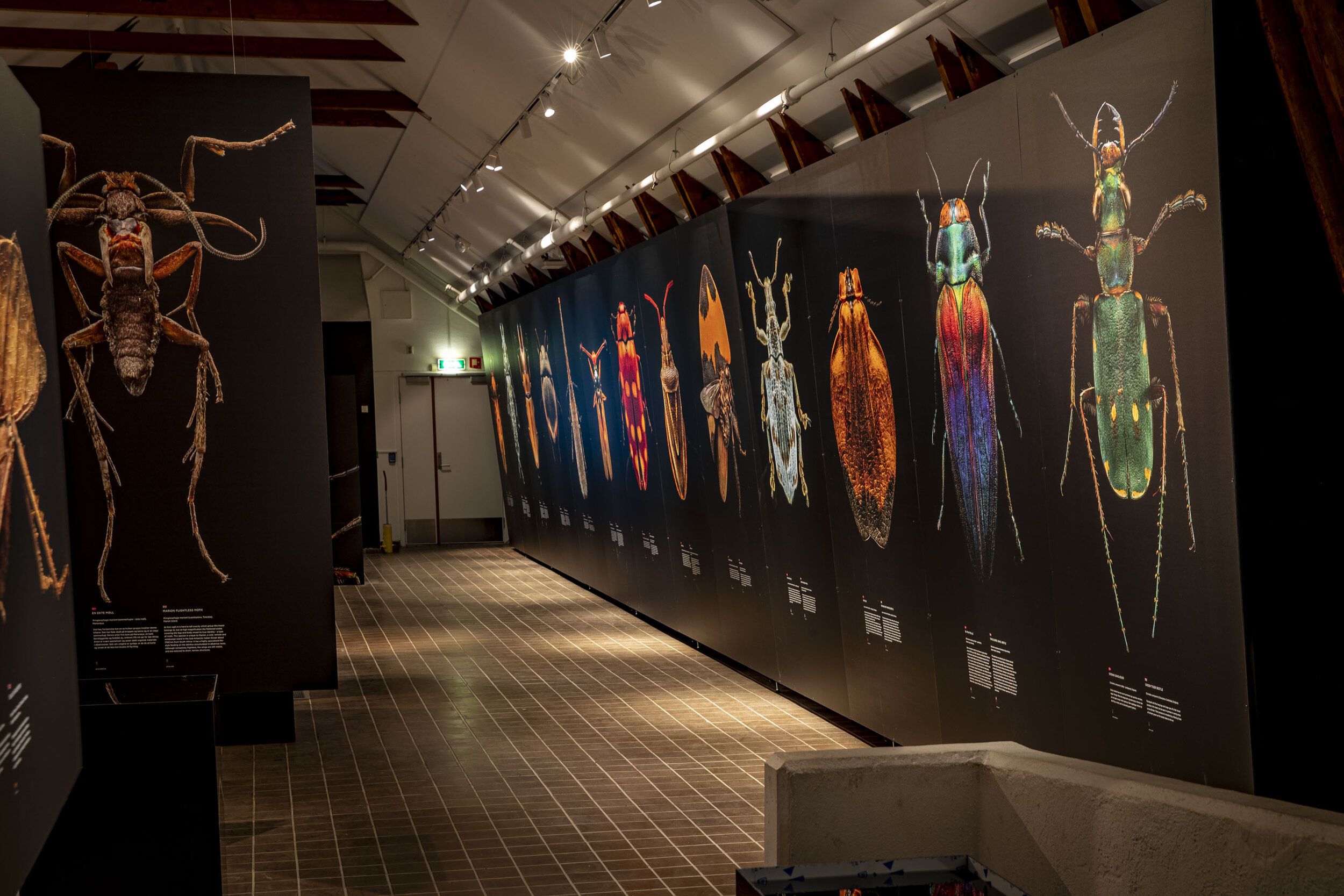
THE INSECT PORTRAITS BY LEVON BISS
ABOUT THE EXHIBITION
Microsculpture is a ground breaking project by the British photographer Levon Biss that presents insect specimens from the Oxford University Museum of Natural History like never before. These images reveal an unexpected and often breathtaking beauty and make visible the many intricate adaptations to the form of insects - what entomologists call their Microsculpture.
Created through a collaboration between Levon and the Museum, this series of beautifully-lit, high magnification portraits captures the microscopic form of insects in striking high-resolution detail. Displayed as large scale photographic prints up to 3m high, the Microsculpture project provides the viewer with an unique opportunity to study and appreciate this hidden world.
-
“Each image from the Microsculpture project is created from around 8000 individual photographs. The pinned insect is placed on an adapted microscope stage that enables me to have complete control over the positioning of the specimen in front of the lens. I shoot with a 36-megapixel camera that has a 10x microscope objective attached to it via a 200mm prime lens.
I photograph the insect in approximately 30 different sections, depending the size of the specimen. Each section is lit differently with strobe lights to bring out the micro sculptural beauty of that particular section of the body. For example, I will light and shoot just one antennae, then after I have completed this area I will move onto the eye and the lighting set up will change entirely to suit the texture and contours of that specific part area of the body. I continue this process until I have covered the whole surface area of the insect.
Due to the inherent shallow depth of field that microscope lenses provide, each individual photograph only contains a tiny slither of focus. To enable me to capture all the information I need to create a fully focused image, the camera is mounted onto an electronic rail that I program to move forward 10 microns between each shot. To give you an idea of how far that is, the average human hair is around 75 microns wide. The camera will then slowly move forward from the front of the insect to the back creating a folder of images that each have a thin plane of focus. Through various photo-stacking processes I flatten these images down to create a single picture that has complete focus throughout the full depth of the insect.
I repeat this process over the entire area of the insect and once I have 30 fully focused sections I bring them together in Photoshop to create the final photograph. From start to finish, a final photograph will take around 4 weeks to shoot, process and retouch.”
Microsculpture was first exhibited in the main court of the Oxford University Museum of Natural History. Surrounded by the museum’s stunning Neo-Gothic architecture, the largest of Microsculpture’s photographic prints measured up to three metres across and surrounded the visitor. Seen alongside the tiny insect specimens themselves, this huge transformation of scale offered a unique viewing experience.
The museum’s internationally-important insect collection contains more than seven million specimens drawn from every country in the world, including specimens from some of the most remote regions and islands. Combined, the museum’s collections represent a vast repository of information on biodiversity.
The entomology collection also has significant cultural and historical value, containing the world’s oldest pinned insect specimen and many thousands of insects collected by pioneering Victorian explorers and biologists such as Charles Darwin and Alfred Russell Wallace
-
This exhibition is available to rent. Please contact us for more information.
Per Olsson
+46 703-757787
per@uponwalls.com
Tricoloured Jewel Beetle
Stag Beetle
Stag Beetle
Ruby tailed Wasp
Ruby tailed Wasp
Pleasing Fungus Beetle
THE OUTDOOR VERSION
The exhibition was design with The Swedish Museum of natural History in mind but was actually set up outside for the first time. It was a huge success with over 350.000 visitors. We had a little laboratory in a pod for kids to explore insects in microscope etc. Allot of joy and fun for the whole family.
THE INDOOR VERSION
The first time the exhibition was built indoors it was in a large hall with beautiful lightning at the The Swedish Museum of Natural History.
THE NATURAL HISTORICAL MUSEUM
STOCKHOLM - SWEDEN










THE CITY PARK IN HJO - SWEDEN













THE NATURAL HISTORY MUSEUM IN KRISTIANSAND, NORWAY











IKEA - SWEDEN
INCLUDES A CLASSROOM WITH A TEACHER AND KIDS COULD BUILD LEGO INSECTS.














FACTS
The exhibition consists of 37 images.
It is designed to be displayed both indoors and outdoors.
Each image is accompanied by a short description providing information about the insect.
The exhibition includes an 80-inch touchscreen with a specially developed application that allows visitors to explore the insects in extreme magnification. This offers an opportunity to discover structures and details like never before.
A film showcasing the photography process should also be part of the exhibition, as it is a fascinating process to experience.
Additionally, there is a POD that contains stereomicroscopes, nets, and educational materials for conducting simple activities to teach children and young people about the world of insects.
FOR FURTHER INFORMATION
AND ENQUIRIES:
Per Olsson
+46 703-757787
per@uponwalls.com







